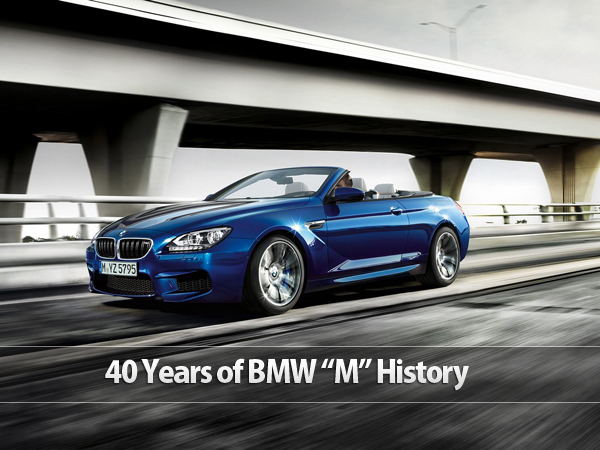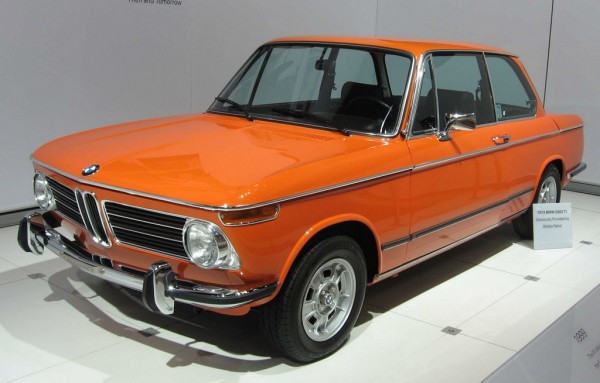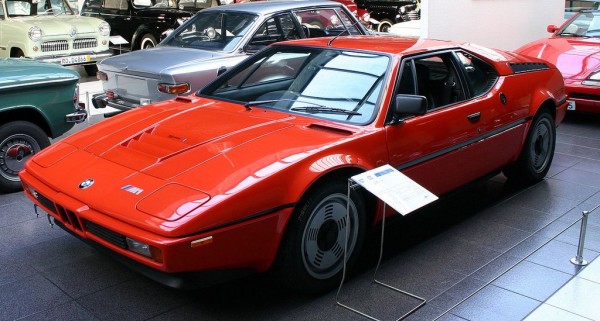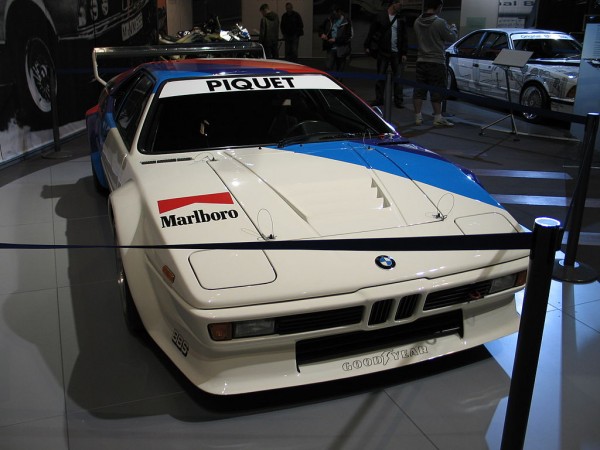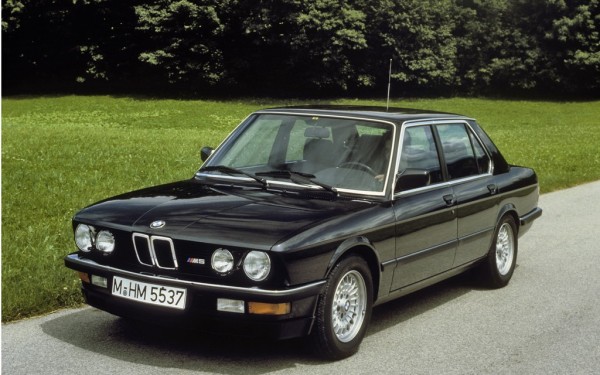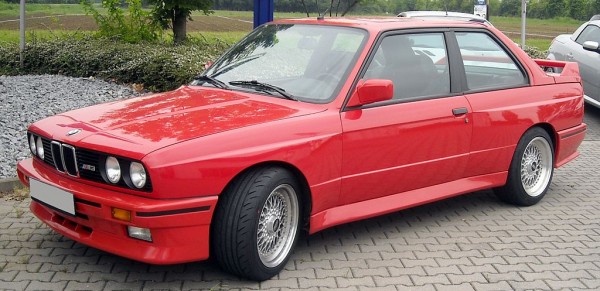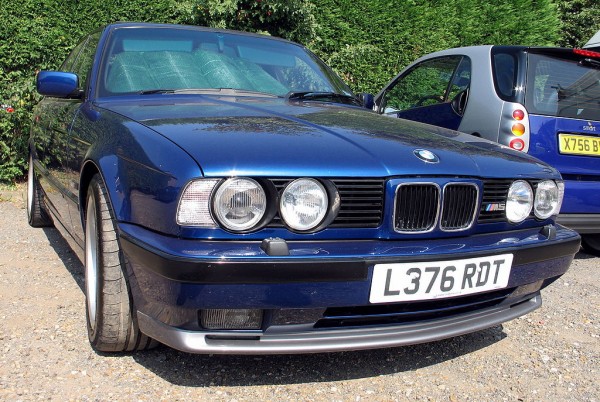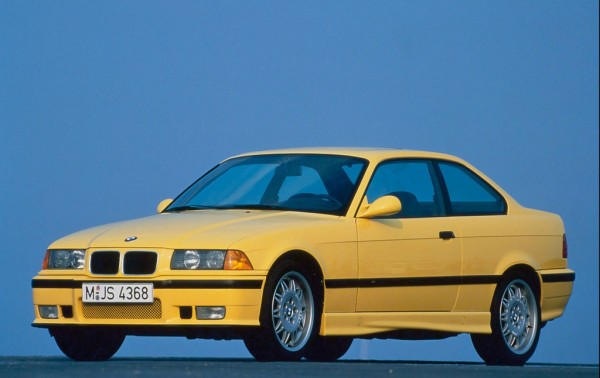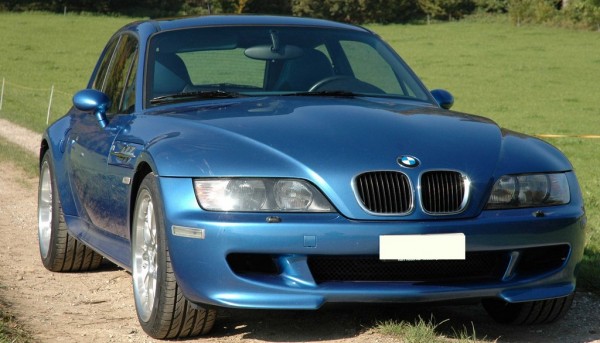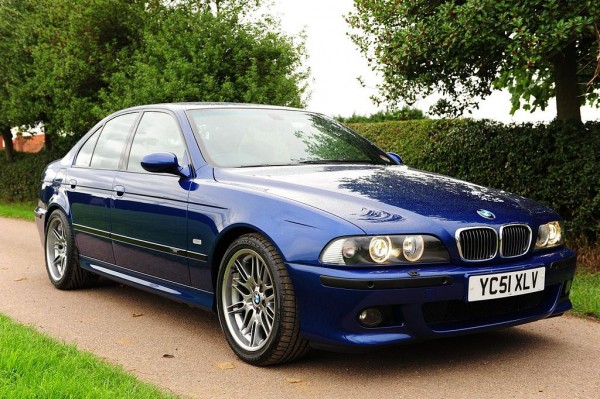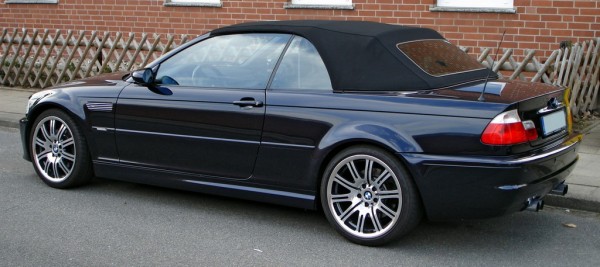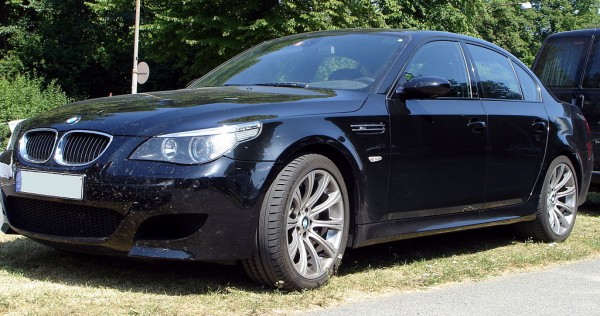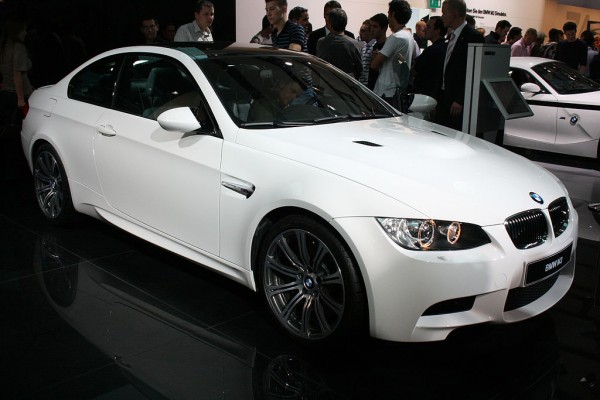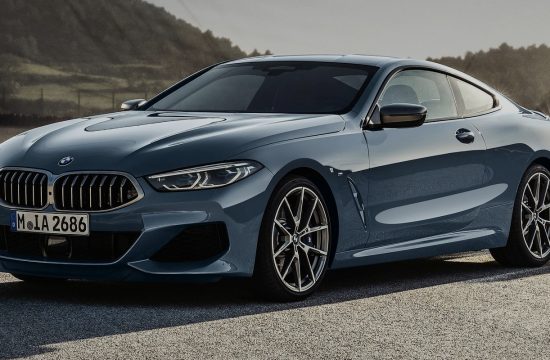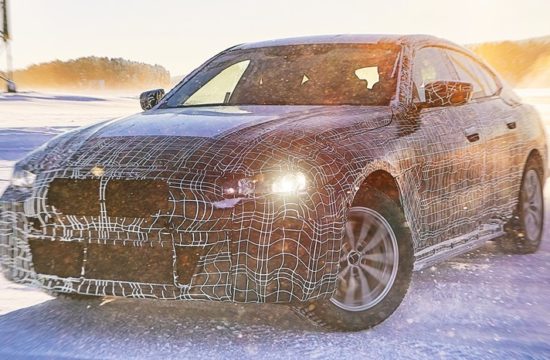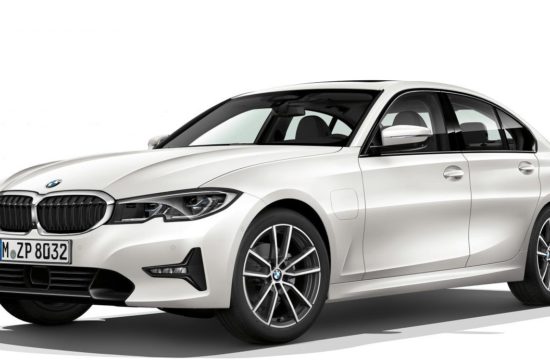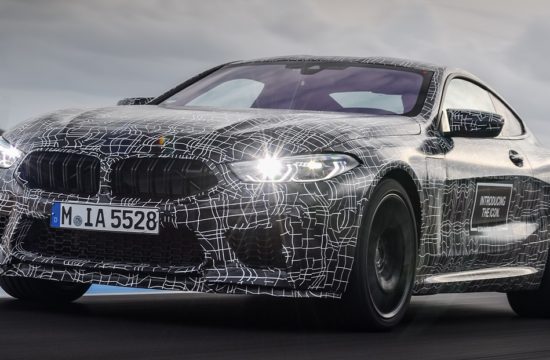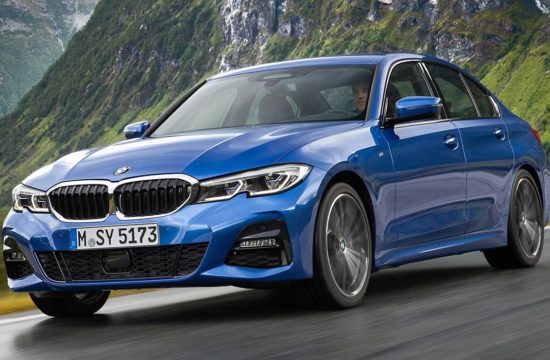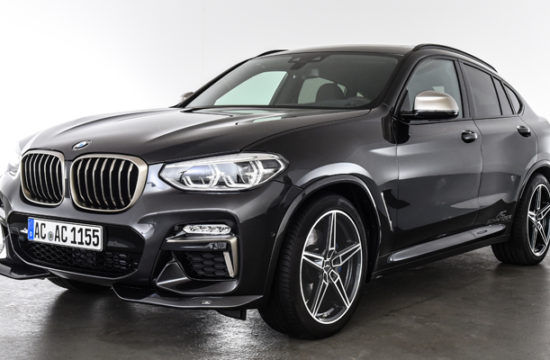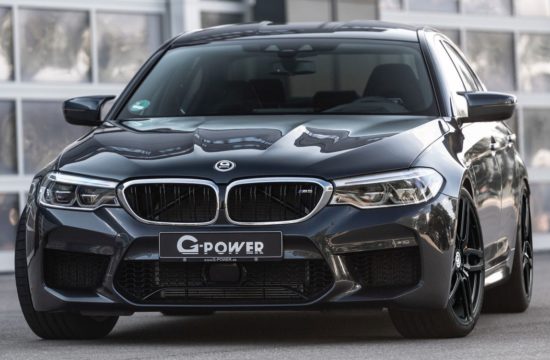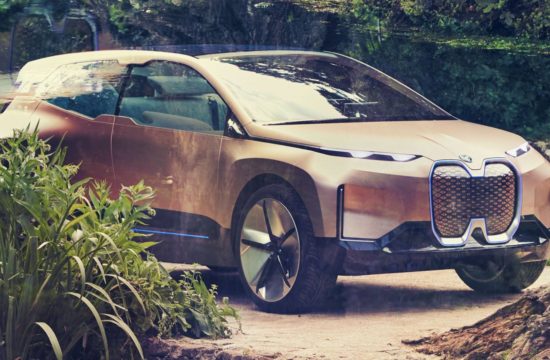BMW Motorsport GmbH. Or, shorter, BMW M. The most powerful letter in the alphabet. Here’s the story of 40 years of BMW M GmbH history.
“A company is just like a human being. As long as it is involved in sports, it will always stay in shape and will be filled with enthusiasm and energy.” These words were said by Robert A. Lutz (better known these days as Bob Lutz) during his short stay as Executive Vice President of Global Sales and Marketing at the German carmaker, when he inaugurated BMW’s “youngest” division, BMW Motorsport GmbH in May 1972.
The ‘70s represented a new beginning for the German carmaker, under a new and young management led by Eberhard von Kuenheim. The German left Daimler and became BMW’s CEO in 1970, when he was a little over 40 years old, and his main purpose in the new position was to reinvent the Munchen based carmaker. And he actually accomplished that because during his long term as BMW’s boss (until 1993) he transformed the company from a decent German carmaker to one of the world’s largest and most appreciated car manufacturers.
Among von Kuenheim’s new projects there was the plan for a new building to serve as the company’s headquarters, the now famous BMW-Vierzylinder (BMW Four Cylinder) in Munchen, and, perhaps one of his most important decision, establishing an in-house division to develop high-performance models. This decision was made after an increase in demand for special street cars, a demand which was more than BMW’s old sports department could handle anymore. The BMW 1800 TI and 2000 TI were successful sports cars involved in several competitions, but BMW was only able to produce a limited number of units, less than what customers were demanding, even though you can still buy these used cars in the UK. And what BMW couldn’t built, it was being built by independent tuning companies, causing the German company to lose potential additional income.
1972: The “M” era begins
This was the background that led to the establishment of BMW Motorsport GmbH division, in 1972. A separate division, but owned entirely by BMW AG. 35 experts were part of this new department, led by Jochen Neerpasch, a motorsport professional whose resume included experience as Porsche factory test driver and a management position at Ford. He was the one that made possible the involvement of several motorsport drivers in the development of M models. Names like Chris Amon, Hans-Joachim Stuck, Toine Hezemans, Bjorn Waldegaard, Dieter Quester or Achim Warmbold were all involved as advisors or testers and some of them were even hired by BMW M as rally drivers.
Several months after its founding, the new M division moved to its own headquarters, where it had the special workshops and tools needed to create competitive cars. All these were close to BMW’s factory in Munchen, in an 8,000 square meter building on Preussenstrasse. This is where the first models were created, in 1973: a 950 kg (2,100 pounds) BMW 2002 powered by a 2.0-liter engine that was delivering 240 hp, plus a coupe wearing the 3.0 CSL name plate. The latter was originally built to allow the car to race in the European Touring Car Championship, because a street-legat homologation version was required. The coupe’s doors and bonnet were made of aluminum and the five speed transmission featured magnesium housing, with total weight being 1,092 kg (2,407 lbs). But the magic was under the bonnet: inline-six engine, 3,340 cmc, 12 valves and a compression ratio of 11:1. Total power output: 360 hp. This was the last engine featuring two valves per cylinders that BMW built for racing.
BMW Motorsport GmbH’s first racing season was 1973. The team was extremely well organized and trained in a very professional manner: all drivers were very well trained, both physically and mentally, with the team having a psychologist and a fitness instructor among others. Also, every image detail was extremely well planned, because all the cars, including the mobile homes, were painted in the same color scheme: the three striking colored stripes (blue, purple and red) on the shiny white background which became BMW M’s visual identity. And it remained unchanged to this day, 40 years later.
BMW 3.0 CSL and success in motorsport
Taking advantage of several circumstances, such as the oil crisis in the early ‘70s that forced many teams to seriously cut budgets, the BMW 3.0 CSL would become the most successful race car of its time. It will go on and win the European Touring Car Championship six times between 1973 and 1979. The model was also a research laboratory for all kind of new technical solutions. It was the first car to use an inline-six engine with four valves per cylinder. After that, it was used to test the new ABS system in 1974. And, towards the end of its career, the BMW 3.0 CSL was using a turbocharged engine that produced 800 hp.
In the meantime, taking advantage of the 3.0 CLS’s success, BMW M received a new task, to put together a driving school for customers. So on February 3, 1976, BMW M GmbH launched what it is known today as the BMW Fahrer Training, which means professional driver training. Ever since its launch, the BMW Fahrer Training was an ambitious project, because it was designed to train around 800 drivers each year. As for the school’s philosophy, it remained unchanged to this day: BMW Driver Training use their own cars for the practical part of the course, so that the “pupil” wouldn’t worry about damaging his tires or any other part of his own car.
In the beginning, the BMW training center had a small fleet of BMW 320i’s. This model’s power output of 120 hp made it perfect as a training car. Also, cars used by the training center had their suspension system modified and featured sports seats for drivers and limited-slip differentials. The first courses were held on the Manching military airport near Ingolstadt. Almost a year later, on January 13, 1977, Rauno Aaltonen was hired as the chief instructor. He was a successful driver in motorsport at that time, winning the European Rally Championship in 1965, the Gallaher 500 (Australia’s most important endurance race) and several other rallies throughout Europe.
After its original involvement in motorsport, BMW’s M division launched the first street models for customers looking for M power in a car they could use on a daily basis. And the first models of the 1974 5 Series were available with M “treatment”: 530i, 533i and 535i. The units modified by the M division featured an upgraded engine and improved suspension systems, superior to production units. Until 1980, 895 “M” units based on the 5 Series were sold.
1978 – BMW M1
The next major step was to create a model that wasn’t based on a regular production BMW and this will be the legendary BMW M1. BMW was supposed to build most of the technical part, but the chassis and body should’ve been supplied by Lamborghini.
However, the Italian manufacturer wasn’t going through its brightest period, facing some serious financial difficulties, and this lead to countless delays of the project. In the end, BMW was forced to improvise and the entire project turned into a logistic puzzle. The car’s multi-tube structure was built by Marchesi, while the fiber glass body was supplied by T.I.R. (Trasformazione Italiana Resina), both companies being based in Modena, Italy. Assembly of the M1 was made by Giorgio Giugiaro’s company, ItalDesign. They were also in charge with equipping the M1’s interior. After all there were finished, the car was then transported to Stuttgart were German company Baur installed the mechanical part.
The BMW M1 was supposed to race in a new competition called ProCar, which was “invented” by FIA as a parallel competition to Formula One, with all stages scheduled to take place on the same tracks as Formula One races. To have the M1 eligible to compete in the championship, BMW had to produce 400 street legal units, so it became the first production model to wear the “M” name plate. A brand new 277 hp BMW M1 was priced, in 1978, at exactly 100,000 German marks (that’s almost $700,000 today!). Despite the astronomical price, the demand was huge. The racing version of the M1 produced 470 hp and could easily go faster than 300 km/h (186 mph). In 1979, driving a BMW M1, Niki Lauda won three races in the ProCar championship.
Motivated by the M1’s racing and commercial success, BMW Motorsport GmbH decided to launch another production model. This time, they started from a BMW model, the 5 Series, and created the M535i, launched in 1980, which was powered by the six cylinder engine delivering 218 hp, “borrowed” from the 635CSi.
1980 – Formula One
Jochen Neerpasch left BMW Motorsport GmbH in 1980 and was replaced by Dieter Stappert, an Austrian journalist which had been working for BMW’s M division since 1977. But probably the most important change was the new Technical Director, Paul Rosche, a German engineer who would play an important role in BMW M entering Formula One.
Under his supervision, BMW M created the highly successful BMW M12 engine. The four cylinder turbocharged engine was based on the standard 1.5-liter BMW M10 engine and was introduced in 1961. During the ‘80s, the M12 engine was used by Brabham, Benetton and Arrows and in 1963, driving a BMW powered Brabham, Nelson Piquet won the World Championship, marking the first time a turbocharged Formula One car won the Championship. The engine powering Piquet’s car produced 850 hp (640 hp during qualifications).
1984 – BMW M5
An upgraded version of the six cylinder engine from the M1 and the chassis from the 535i will be the starting points for a new legend, the BMW M5 E28. Despite looking like a regular 5 Series, the first M5 was hand built at the Preussenstrasse facility and it produced 286 hp, being able to sprint from 0 to 60 mph in 6.5 seconds and reach a top speed of 245 km/h (152 mph). Because it was equipped with a catalytic converter, the North American M5 was powered by a less powerful version of the engine, which produced only 256 hp. This meant 0 to 60 mph time was the same, 6.5 seconds, but top speed was lower, 238 km/h (148 mph). The first generation BMW M5 is considered to be one of the rarest M cars ever built, with only 2,191 units sold (the rarest one is the M1).
1986 – BMW M3
After retiring from Formula One, BMW’ M division focused entirely on one area of motorsport, and that was touring car racing. Thanks to this strategy, 1986 marked the debut of the BMW M3, a two door sports car that will write history for the division. The first version was built in a production run of 5,000 units and ever since the beginning its purpose was to meet ETCC Group A’s regulations. It was during the first M3’s production when BMW realized the current M facility was getting too small for a project this large and a second location was inaugurated, in the city of Garching, near Munchen.
As for motorsport, the BMW M3 made a strong debut in its racing career because, in 1987, the Italian Roberto Ravaglia won the Touring Car Championship driving an M3.
As for sales, it was also a huge success, a total number of 17,970 units being sold during the seven year production run, including 600 2.5 I M3 Sportevolution units and 765 convertible M3s.
1988 – The second M5 generation
The second generation of the BMW M5 was launched in 1988, powered by a six cylinder engine with a 3.6-liter displacement that produced 315 hp and 266 lb-ft of torque. The E46 M5 accelerated from 0 to 60 mph in 6.3 seconds and was able to reach an electronically limited top speed of 155 mph.
Three years later, the engine’s displacement was increased to 3.8-liters, which also meant a power increase up to 335 hp. This reduced the 0 to 60 mph time to 5.7 seconds and increased top speed to 177 mph (also electronically limited). In North American and South Africa, due to strict emissions regulations, the upgraded engine was not available.
Starting with 1992, BMW also launched an estate version of the M5, called the BMW M5 Touring. Several special editions were available, including the Cecotto Edition and Winkelhock Edition (customized by racing drivers Johnny Cecotto and Joachim Winkelhock), a special 20 year anniversary edition (limited run of only 20 units) and an UK Limited Edition that marked the end of right-hand drive E34 M5 production.
1992 – The second M3 generation
BMW’s M division started working on the new M3 at the same time the “regular” 3 Series was being developed. The new M3 made its market debut in 1992 and it was considered a more discreet model compared to its predecessor. It was powered by a six cylinder engine that was delivering 282 hp and it was the first BMW to use the VANOS system (an advanced variable valve timing system). 0 to 60 mph sprint was made in 5.4 seconds, top speed was electronically limited to 155 mph and the M3’s chassis made many experts name it as one of the greatest sports cars of the ‘90s.
Besides the coupe, the M3 E36 was also available as a convertible and as a sedan. A limited edition M3 GT was produced, the main highlight being a more powerful engine that produced 295 hp. In 1995, the M3 received an update and was equipped with a new 3.2-liter engine that produced 316 hp. Top speed was the same, but the 0 to 60 mph sprint time was improved by 0.2 seconds (5.2 seconds).
1997 – The twins
Following the introduction of the Z3 in 1995, the M division also created their high-performance of the small roadster (the first mass produced roadster in BMW’s history). The combination between the beautiful Z3 and the 321 hp engine from the M3 was quite appealing and in just 5 years, BMW sold around 15,000 M Roadsters. A BMW M Coupe was also available, however the cars unique styling caused some distribution problems and only around 6,000 units were sold.
1998 – The 400 hp BMW M5
At the time of its launch, the third generation BMW M5 (E39) was introduced as the world’s fastest sedan. There are some debates around this statement, but the truth is that through its performance level and sales number, this was probably one of the most important models in M’s history.
For the first time, the M division was dropping the six cylinder engine in favor of an eight cylinder unit that produced 400 hp and 500 Nm of torque. Performance figures were outstanding: 0 to 60 mph in 4.8 seconds, an electronically limited top speed of 155 mph and a delimited top speed of 186 mph.
2000 – The E46 M3
The third generation BMW M3 (codename E46) was launched in 2000 and it featured brakes made of composite materials plus, of course, more power: 343 hp, 269 lb-ft Nm, 0 to 62 mph in 5.1 seconds and a delimited top speed of over 190 mph. The sedan version was dropped and only the coupe and the convertible were available. To many, this was and still is the best M3 ever built: great performances coming out of the naturally aspirated engine, great handling and an affordable price. It was also the best-selling M3 of all time, with a total number of 85,744 units sold during the five year production run.
2004 – The new M5/M6
The autumn of 2004 marked the debut of the fourth generation M5, which became the most powerful “M” car in history. It was powered by a 5.0-liter V10 that produced 507 hp and 520 Nm. Mated with the new seven speed SMG semi-automatic transmission it sprinted from 0 to 100 km/h (62 mph) in 4.7 seconds, up to 200 km/h (124 mph) in 15 seconds and reached a top speed of 205 mph.
Just a month later, the new BMW M6 was also introduced which shared the powertrain with the M5. The “M” family grew even larger in 2006, when the Z4 M Roadster was launched, powered by the 343 hp engine from the M3.
2007 – The M3 gets eight cylinders
After 15 years of being powered by six cylinder engines, the M3 switched to the more powerful V8. The four-liter unit powering the E90/92/93 was producing 420-hp.
This will probably be the last M3 to have a two door version, because, as you probably already know, starting with the new generation F30, the German carmaker has decided to spin off the coupe and the convertible into a separate nameplate, the BMW 4 Series (which will probably spawn the M4 Coupe and the M4 Convertible). However, the M3 won’t die, because an M version of the 3 Series sedan is expected to be introduced anytime soon.
The BMW M lineup today
Today, the smallest “M” model is the BMW 1 Series M Coupe, which many fans praised for bringing back what “M” is all about: it’s a classic two door sports powered by a six cylinder engine delivering 340 hp.
As for the new M3 and M4, so far we don’t know too much, BMW currently working on getting them out.
The fifth generation M5 (codename F10) was unveiled in 2011, with sales starting in 2012. Even though it featured a more powerful engine, a 4.4-liter V8 delivering 560 hp (418 kw) and 502 lb-ft (681 Nm), it has a lower top speed compared to its predecessor, mainly due to the increased weight (190 mph with the electronic limitation off). The car has been praised for its great transmission and fuel economy, but many fans were disappointed and consider it “less of a sports car” than the E60 M5, mainly due to the engine being turbocharged (first time on an M5) and the road handling being affected by the increased weight. The same engine is being used for the M6, but people expect something different from the luxury coupe so no complaints over there.
Another area that was also considered a tabu by BMW fans are SUVs. And to the despair of some and joy of others, today we have the BMW X5 M and BMW X6 M available, both powered by a turbocharged V8 producing 555 hp. We also have diesel Ms, which probably gave a heart attack to every “M” purist out there: the M550d, the X5 M50d and the X6 M50d are all powered by a turbocharged 3.0-liter diesel that delivers 376 hp and 550 lb-ft.
So how will the future look like for BMW’s M division? Well, everyone is expecting nothing but the best from one of the world’s most important high-performance divisions and whatever happens in the future we hope they’ll manage to keep thrilling us with amazing new models.

